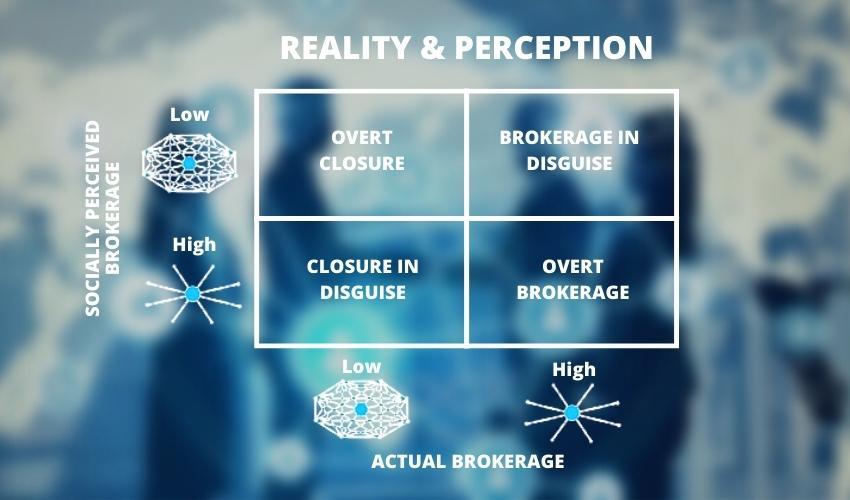
Are You Well Connected in Your Firm? Better Keep Quiet About It
Personal connections are the building blocks of the so-called informal organization, that is, the system of "invisible" relationships behind any organizational chart. Uniquely important within this informal organization is the role of the broker, defined as someone who acts as a point of contact between two or more colleagues, who would otherwise be disconnected from each other. According to a recent study by Alessandro Iorio-Assistant Professor in the Department of Management and Technology-the most effective brokers (i.e., individuals who excel at translating ideas into innovation) are, perhaps unexpectedly, those who are not perceived as brokers by their colleagues.
Because they are the linchpin of an informal network composed of people who do not necessarily know each other, brokers have actually been studied for many years. In particular, past work has developed along two relatively independent streams of research. The first, originating from an organizational theory perspective, has focused on the structural dynamics of social networks by analyzing how brokers enjoy a competitive advantage over their peers (e.g., higher salaries, faster promotions, and better performance assessments) through the acquisition of nonredundant information and novel points of view. Such resources, indeed, abound when networks are disconnected, because they allow for the coexistence of heterogeneous skills, needs, and expectations.
The other stream of research, originating from social psychology, has investigated how networks, and thus brokers, are cognitively perceived. Indeed, the web of informal connections that exist in the workplace among people are not always accurately perceived by others. For example, think about how difficult it is to figure out the informal connections that your colleagues have developed at work (i.e., knowing who is connected to whom). For this reason, some people may connect separate groups or regions of a social network without their colleagues being aware of it. This is important, as people may experience mistrust and resistance when passing information to recognized brokers, who may distort information to their own advantage, or spread it beyond the source's intentions. In fact, research tells us that trust develops faster, and lasts longer, when people think they are part of a single, interconnected group.
Iorio merged these two lines of research through a multi-method study comprising field and experimental data. In the first study, he involved 155 employees of a major U.S. consulting firm, while in the second experimental study he recruited 166 participants who had signed up to a crowdfunding site. These studies had a twofold objective. On the one hand, they were meant to corroborate the structuralist perspective showing how brokers are more innovative than people locked in tight and highly interconnected networks. On the other hand, they showed that the effects of network structure on individual innovation varies according to how brokers' networks are perceived by others. Indeed, by crossing the two dimensions of brokerage-structural and perceived-it is possible to obtain the matrix below. Iorio uses the "in disguise" label to describe situations where reality does not match with perception.

Results clearly show that brokers in disguise achieve the best performance in terms of innovation: 67% of people in this group are rated as "top-performers." In contrast, the worst performers are those who have social networks with few brokerage opportunities and, at the same time, are perceived by others to connect different groups (50% top performers). Iorio explains that the advantage gained from being well-connected, without others being aware of it, depends on two factors. First, due to their exposure to different contexts, information, and experiences, these people are able to come up with truly innovative ideas. Second, when it comes to transforming ideas into finished products or actual services, these people are granted a lot of trust from others, a factor that is essential in the idea implementation phase. Trust, therefore, emerges as the key mechanism behind the broker-in-disguise effect. In other words, if others do not trust us, ideas will not turn into innovation, regardless of their underlying quality.
"This study," Iorio explains, "illustrates how important it is to take both perceptual and structural mechanisms into account when analyzing how much people benefit from being in a broker position. Social perceptions about broker roles are a critically important element in the study of the relationship between structure and performance."
Alessandro Iorio, "Brokers in Disguise: The Joint Effect of Actual Brokerage and Socially Perceived Brokerage on Network Advantage," Administrative Science Quarterly, published online on April 28, 2022, DOI:https://doi.org/10.1177/00018392221092242.
Why to Hide Our Role in a Firm's Network
